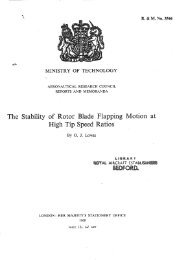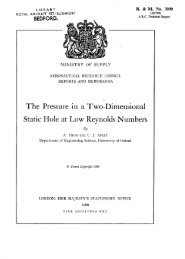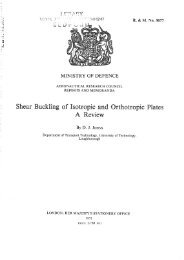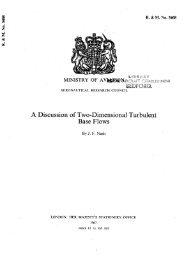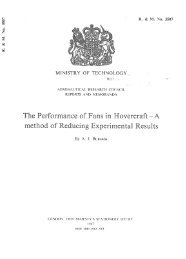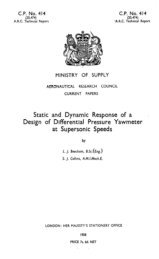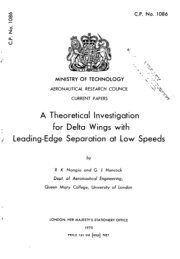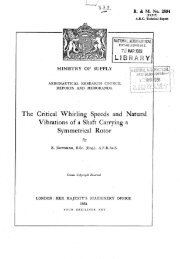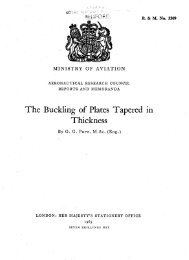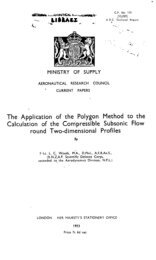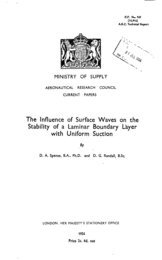Fatigue behaviour of BS 2L65 aluminium alloy pin - aerade
Fatigue behaviour of BS 2L65 aluminium alloy pin - aerade
Fatigue behaviour of BS 2L65 aluminium alloy pin - aerade
Create successful ePaper yourself
Turn your PDF publications into a flip-book with our unique Google optimized e-Paper software.
4<br />
would be tested under narrow band random loading to simulate service conditions<br />
in a simple way. This work is reported in section 2 which includes life predic-<br />
tions for the random loading cases using Miner's Rule.<br />
It has been shown that in many cases more accurate life estimations can be<br />
made by considering the actual state <strong>of</strong> stress at the point <strong>of</strong> crack initiation,<br />
rather than net section stresses. Section 3 presents local stress history<br />
measurements in bushed and unbushed lugs using the Companion Specimen Method 7<br />
which were made in order to try to explain some <strong>of</strong> the observed fatigue <strong>behaviour</strong><br />
and if possible to improve the life estimations made.<br />
2 FATIGUE TESTS<br />
All the results quoted for the unbushed lugs have been reported previously 8,<br />
having been carried out as part <strong>of</strong> an earlier investigation. However, for<br />
completeness, a full description is given <strong>of</strong> the specimens and tests for both<br />
the unbushed and the bushed lug tests.<br />
2.1 Material and specimens<br />
All lugs, bushed and unbushed, were manufactured from bars <strong>of</strong> <strong>BS</strong> <strong>2L65</strong><br />
<strong>aluminium</strong> <strong>alloy</strong> material obtained from one melt. The chemical analysis provided<br />
by the manufacturers and tensile properties obtained from test pieces cut from<br />
the same batch <strong>of</strong> material, are given in Table I.<br />
Fig I shows the unbushed lug specimen which was <strong>pin</strong>-loaded at each end.<br />
The same specimen was adapted to a bushed lug as shown in Fig 2 by enlarging one<br />
<strong>of</strong> the holes and fitting a bush to accept the same size <strong>of</strong> <strong>pin</strong>; in this form<br />
only the bushed hole was <strong>pin</strong>-loaded, the other end being clamped by wedge grips.<br />
As the bushed and unbushed lugs had the same gross cross-section and <strong>pin</strong> size<br />
they can be regarded as interchangeable components for the purpose <strong>of</strong> comparing<br />
fatigue performance.<br />
The bush, shown in Fig 3, was made <strong>of</strong> $80 stainless steel and cadmium<br />
plated on its outer surface to prevent corrosion where the steel is in contact<br />
with the <strong>aluminium</strong> lug. For purposes <strong>of</strong> comparison, some bushes underwent a<br />
passivating process following plating, and some were untreated. The passivation<br />
process is normal practice following cadmium plating and gives greater resistance<br />
to corrosion. The bush had a nominal 0°27% interference in the lug, and in order<br />
to facilitate insertion, was placed on a mandrel and cooled in liquid nitrogen.<br />
The lug, preheated to 115°C was aligned in a jig below the bush and thus the<br />
possibility <strong>of</strong> scoring the hole bore was minimised.



